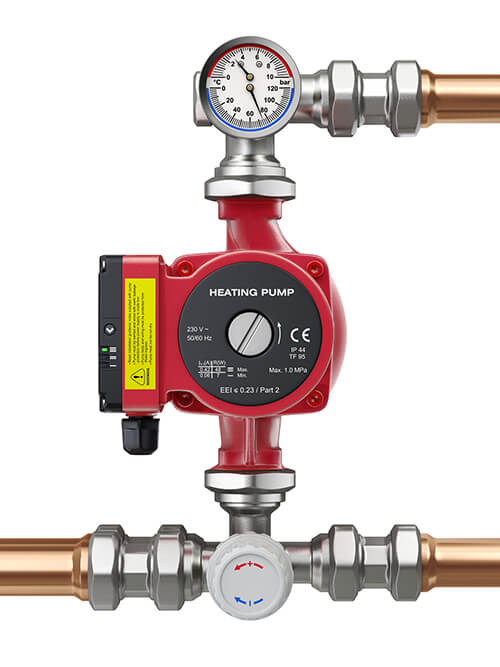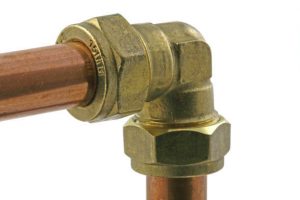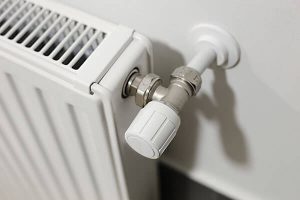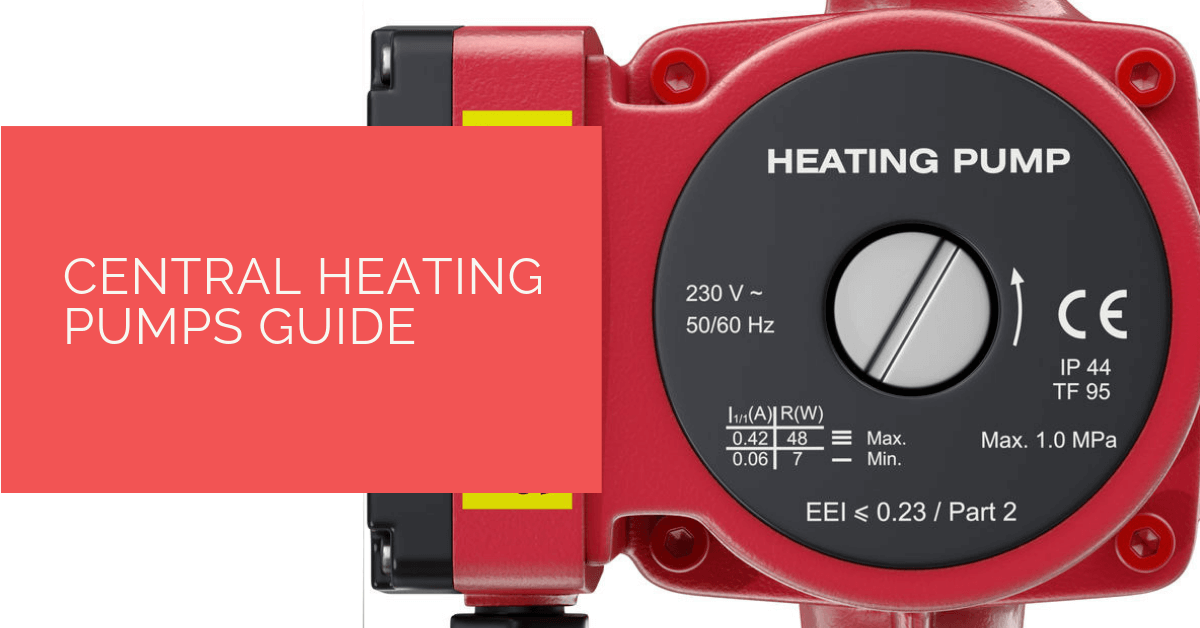The heating system is made of fine-tuned components including the all-important central heating pump. Without fully functional parts, the system doesn’t work efficiently and eventually breaks down.
Here’s a detailed guide on central heating pumps, how they work, and what to look for when problems arise.
Contents
- 1 Key Takeaways
- 2 What is a Central Heating Pump?
- 3 How Does a Central Heating Pump Work?
- 4 What are the Main Components of a Central Heating Pump?
- 5 Where is my Central Heating Pump Located?
- 6 Does a Central Heating Pump Use Electricity?
- 7 How Much Power Does a Central Heating Pump Use?
- 8 How Long Does a Central Heating Pump Last?
- 9 How Do I Size a Central Heating Pump?
- 10 The Four Most Common Central Heating Pump Problems
- 11 Does My Central Heating Pump Need Replacing?
- 12 Case Study: Optimising Central Heating Efficiency with a New Pump Installation
- 13 Expert Insights About Central Heating Pumps
- 14 Heat Pump Source: Reliable Heating and Cooling Solutions
- 15 Conclusion
Key Takeaways
- A central heating pump is a crucial component in a heating system, responsible for circulating hot water between various parts of the system, such as radiators and boilers.
- Central heating pumps require electricity, typically around 240 volts, and can last up to 10+ years with proper maintenance.
- Common central heating pump problems include rattling noise, loud central heating systems, a lack of noise from the pump, and the pump not starting up; these issues may require replacement if they persist despite troubleshooting efforts.
What is a Central Heating Pump?
The central heating system is composed of several small-sized parts and this includes a central heating pump. In general, the central heating pump is responsible for circulating hot water between different parts (i.e. radiator to boiler and back. Without the pump working at 100%, the system is unable to complete the circulation efficiently. This is an integral part associated with moving water from one part of the property to another as smoothly as possible.
How Does a Central Heating Pump Work?
Central heating pumps work by “pumping” water through the central heating system. Once activated, the little component makes sure to push water throughout the system, which includes larger parts such as the boiler and radiator. These components cannot work unless the water is efficiently pushed from one end to the other as safely as necessary.
When working, the central heating pump is able to push hot water to the radiators and back to the boiler. The idea is to make sure water is pushing through the boiler and going into the radiator without losing potency. If there is a restriction in flow, it often has to do with the pump not working well.
Once the water starts to enter into the main room, it will cool the area. This cooler water is going to come back into the boiler, which completes the cycle.
This circulation is a must for the central heating system to work as intended.

What are the Main Components of a Central Heating Pump?
There are several components associated with the central heating pump.
1. Water Flow Outlet
The water has to leave once it is ready to be pumped and that’s when the water flow outlet kicks into high gear. The water is allowed to exit through this part back to the other central heating system parts. The water has to exit at a specific flow rate and that’s where the water flow outlet plays a role.
2. Water Flow Inlet
The water flow inlet is responsible for welcoming central heating water back into the pump. The flow rate is determined by this component once the pump starts working.
3. Pump Pressure Adjust
There is a set dial in place to help customise the central heating pump as needed. Once adjusted, the central heating pump is able to push water at the desired rate consistently.
Whenever there is an issue in the pressure, it’s often associated with the dial not being put at a higher pressure setting. Make the change and this will immediately provide a necessary shift in quality.
4. Electrical Connectors
There are various electrical connectors within the central heating pump and each one pushes an electrical charge through ensuring everything works as intended.
If there’s no energy coming through, the component will not work.
5. Pump Bleed Screw
A pump bleed screw is set up to make sure everything is balanced within the central heating pump. This means if there are any inconsistencies in the pump, this part is able to push air bubbles out.
It’s important to have air leave the system to balance everything else and that’s what a pump bleed screw does.
6. Electricity Supply Cable
To get started, the central heating pump has to work efficiently and this begins with the main supply cable. This cable helps connect straight to the main electrical source.
Where is my Central Heating Pump Located?
In general, each property will have its own setup with regards to the central heating pump’s location. Four most settings, the central heating pump is located closer to the boiler but this will vary from place to place.
If the pump isn’t close to the boiler, this means it has been somewhere else within the central heating system. This can include under the stairs or close to an airing cupboard.
Does a Central Heating Pump Use Electricity?
Yes, central heating pumps do require electricity as soon as the central heating system is turned on. When the system isn’t on, the electricity turns off immediately.
The pump will often be connected straight to the main electricity source. In rare cases, the property owner may have a separate power source (i.e. battery) in place.
How Much Power Does a Central Heating Pump Use?
According to recent performance studies, the average central heating pump demands approximately 240 volts of energy. This is similar to most modern-day small appliances at home (i.e. toaster).
Please note, this is an average rating and most central heating pumps will not require 240 volts of power.
How Long Does a Central Heating Pump Last?
The pump will last four a long time depending on how it is utilised within the overall system. A traditional household is going to be able to live with the same pump four approximately 10+ years without a problem. However, if the heating system is under continued stress, it will start to break down earlier.
Most pumps don’t break down completely and simply start losing efficiency. They don’t perform at peak levels like they used to. This is something to keep an eye on.
How Do I Size a Central Heating Pump?
Finding the right central heating pump is just as important as anything else. This includes the overall sizing and how it’s going to fit into the central heating system.
Four your home, it’s important to look at a list of variables such as the property’s size, boiler’s size, piping layout, and underlying insulation metrics. Each detail has a role to play in determining what works and what doesn’t.
In general, you are able to get away with an average-sized central heating pump for most houses. To stay safer, it’s always recommended to aim higher and go with a stronger option.
Allow an expert to assess the home before making a decision. They will know what to look for and can run through a visual inspection involving each component before giving their opinion.

The Four Most Common Central Heating Pump Problems
The central heating pump isn’t always going to work like it did on day one. There are going to be times when the pump starts giving problems and it’s important to stay alert.
The pump isn’t going to give out without making a noise and that’s why it’s smart to pay attention. If you start noticing problems, it becomes easier to understand what’s required next.
Here are four of the most common central heating pump problems to keep an eye out for.
1. Rattling Noise
Odd noises are common with a wonky central heating pump and are generally the first sign of trouble. When the central heating system isn’t functioning as required, it starts making weird noises. These noises are going to vary from unit to unit with some making a rattling noise while others humming loudly.
A properly functioning pump isn’t going to make loud noises.
To fix this problem, it’s recommended to assess the main pump fittings. Tighten them and see if the noises are still coming.
2. Central Heating System is Loud
While the pump makes its own noises when there are issues, so does the overall central heating system. The noise won’t come from the actual pump but may come somewhere else down the line.
For example, some property owners report a humming noise from different areas of the system at once. While others notice knocking noises throughout the day.
This means air has entered the central heating system and it’s time to bleed it out through the pump bleed screw.
3. Pump Doesn’t Make Noises
What if there is no noise at all when the central heating pump is turned on?
There has to be a little bit of noise when the pump is turned on and that has to be kept in mind while troubleshooting. If the pump isn’t making enough noise that means it’s not pumping properly.
It’s important to keep the pump clean in such a scenario while assessing the water supply in detail.
4. Pump Isn’t Starting Up
This issue occurs when the central heating system’s fuse isn’t working properly. It will need to be replaced.
Does My Central Heating Pump Need Replacing?
Let’s imagine all of these issues have been looked into and the central heating pump still isn’t working. Is it time to replace the entire part to get things working?
There are times when the part ages and simply doesn’t work any longer. This often has to do with corrosion due to ageing and continued use.
If this occurs, it’s time to call in an expert to determine what’s going on and what needs to be done. They will be able to do a proper assessment of the issue before deciding what is required.
An issue that can arise has to do with the pump heating up aggressively. If the pump continues to heat up, this means it has been damaged from the inside and will have to be replaced. The same applies to units that make far too much noise after everything has been tightened. If the noise persists or gets louder, this means the internal components are damaged.
The radiator has to be assessed in detail because sometimes the pump doesn’t push enough water. When this happens, it means the pump is failing and isn’t going to get better with minor adjustments. It’s better to spend money on a new central heating pump.
Leaks are a major issue that can happen at any time and this often has to do with natural corrosion. If the unit starts leaking, it might be time to replace it.
Central heating pumps remains a major part of modern-day heating systems and have to be well-maintained. By understanding what’s troubling the system and what needs changing, it becomes easier to manage as soon as trouble arises. By assessing the different components, a person is able to determine whether or not the central heating pump is working as required. This can shed immediate light on what is needed and how soon it’s required.
Whenever a problem does arise, it’s important to speak with a certified specialist to ensure the central heating pump is in good shape. This will ensure the results are prompt, professional, and in line with the property’s requirements.

Case Study: Optimising Central Heating Efficiency with a New Pump Installation
Background
A homeowner in the UK contacted Heat Pump Source with concerns about uneven heating across their property and high energy bills. The existing central heating system was over 15 years old and had not received regular maintenance. The primary objective was to assess the system and identify any components that required replacement or upgrading, with a specific focus on the central heating pump.
Project Overview
The project involved evaluating the current central heating setup, including the pump, radiators, and boiler. The aim was to ensure efficient hot water circulation throughout the property, eliminate cold spots, and reduce energy consumption. A thorough inspection revealed that the central heating pump was outdated and inefficient, struggling to circulate water effectively throughout the system.
Implementation
Assessment and Diagnosis
- Initial Inspection: Our team conducted a comprehensive inspection of the central heating system, including the boiler, radiators, and pipework. We found that the existing pump was underperforming due to age and wear, leading to uneven heating and high energy consumption.
- Pump Selection: Based on the property size, number of radiators, and overall system demand, we recommended a new, energy-efficient central heating pump with variable speed control. This type of pump would adjust its speed based on the system’s heating demand, ensuring efficient operation.
Installation Process
- System Preparation: We drained the central heating system and removed the old pump. The pipework was cleaned to remove any debris that could affect the new pump’s performance.
- New Pump Installation: The new pump was installed with proper alignment and secured to prevent vibrations. The electrical connections were carefully checked to ensure safe operation.
- System Testing and Balancing: After installation, the system was refilled, and the pump’s speed settings were calibrated to match the property’s heating requirements. Each radiator was balanced to ensure even heat distribution.
Maintenance Plan
- Regular Check-Ups: We provided the homeowner with a maintenance plan that included annual inspections and guidance on monitoring the system’s performance. Regular check-ups are crucial for maintaining the pump’s efficiency and identifying potential issues early.
Results
- Improved Heating Performance: The new pump significantly improved water circulation, resulting in even heating throughout the property. The homeowner reported that rooms previously experiencing cold spots were now comfortably warm.
- Energy Efficiency: The variable speed control of the new pump optimised energy use, reducing the homeowner’s energy bills by approximately 20%.
- Increased System Longevity: By installing a modern pump and ensuring proper system maintenance, the overall lifespan of the central heating system was extended, preventing costly future repairs.
Summary
This case study highlights the critical role of a well-functioning central heating pump in maintaining an efficient and effective heating system. At Heat Pump Source, our expertise in assessing and upgrading heating systems ensured that the homeowner received a solution that addressed their specific needs. The installation of an energy-efficient pump not only enhanced heating performance but also provided significant energy savings. Regular maintenance and timely upgrades are essential for the longevity and efficiency of central heating systems, ensuring comfort and cost savings for homeowners.
Expert Insights About Central Heating Pumps
The central heating pump is the unsung hero of any heating system, responsible for ensuring that hot water circulates efficiently throughout the system. A well-maintained pump not only extends the lifespan of the system but also ensures optimal energy efficiency.
Chief HVAC Technician
Choosing the right central heating pump for your system is crucial. The pump must be appropriately sized to handle the system’s demand; otherwise, it can lead to inefficiencies or even damage to other components like boilers and radiators.
Central Heating Specialist
Regular maintenance is key to preventing common issues like air locks or pressure drops. Homeowners should be vigilant about unusual noises or changes in heating performance, as these can be early signs of pump problems.
Technical Support Engineer
Heat Pump Source: Reliable Heating and Cooling Solutions
At Heat Pump Source, we take pride in our unwavering commitment to serving the UK with top-tier HVAC solutions. From the efficiency of heat pumps and the cool relief of air conditioning to the warmth of boilers, radiators, and underfloor heating, our dedicated team is always at the forefront of innovation. We understand the unique needs of every household and business, and we strive to provide dependable health and cooling products and services that are tailored just for you. Ensuring your comfort and satisfaction is our utmost priority. Whether you have questions, need guidance, or require support, we’re always here to assist. Please don’t hesitate to contact us; we’re eager to be of service.
Conclusion
Understanding the role and maintenance of a central heating pump is essential for the efficient operation of your heating system. Regular maintenance can extend its lifespan and prevent common issues. However, when problems persist, or the pump shows signs of wear and tear, it’s advisable to seek professional assistance for a thorough assessment and potential replacement. By keeping your central heating pump in good shape, you can ensure a cozy and warm environment in your home, even during the coldest months of the year.
About the Author
At Heat Pump Source, our articles are the product of a collaborative effort among a team of highly skilled HVAC experts. Our dedicated professionals, hailing from diverse backgrounds in heating, ventilation, air conditioning, and refrigeration, contribute their extensive knowledge and experience to every piece of content. This multidisciplinary approach ensures comprehensive coverage. Our commitment is to deliver authoritative, reliable, and tailored advice to meet the unique needs of every household and business across the UK.

